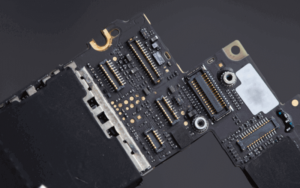The future of mobile gaming has always stirred conversations, debates, and excitement among both gaming aficionados and creators. Recollecting the good old days, who could forget the charm of ‘Snake’ on those hefty Nokia phones? Fast forward to our current age, and we’re immersing ourselves in graphically intense escapades on slim, sleek smartphones.
Undeniably, the transformative arc of this journey has been led by the processors, acting as silent champions. These technological marvels have grown more intricate with each iteration. Standing at this exciting juncture of mobile gaming, it becomes essential to deep dive into how processors are set to redefine the way we game.
Couple this with emerging tech trends from augmented reality adventures to lag-free multiplayer experiences, and you can’t help but feel that the beating core of this transformation will indeed be the processors.
A Brief History of Mobile Gaming
When we embark on the nostalgic trail of mobile gaming, one can’t help but reminisce about the iconic ‘Snake’ game on Nokia’s legacy models. This simple yet entrancing game sparked the mobile gaming revolution. But jump to the past decade, and it feels like we’ve ventured into a different universe altogether. Our modern smartphones, boasting potent processors and vivid displays, have revolutionized gaming. The likes of “PUBG Mobile,” “Among Us,” and “Genshin Impact” exemplify this sea change.
Beyond just advanced hardware, the blossoming of platforms like Google’s Play Store and Apple’s App Store have played a pivotal role. They’ve offered a platform for global developers to unleash their creativity and cater to a ballooning base of mobile gaming enthusiasts. From the unassuming days of “Snake” to the sprawling digital worlds we’re privy to now, mobile gaming’s evolution has been genuinely awe-inspiring.
Current State of Mobile Gaming Processors
Its processor lies at the nucleus of any mobile gadget, especially from a gaming perspective. As games evolve, demanding more depth and detail, the need for the best processor for gaming mobile becomes more pressing than ever.. Many top-tier chip manufacturers have responded admirably to this call.
Qualcomm, with its Snapdragon series, has been a consistent frontrunner, frequently redefining benchmarks. Their newer innovations, like the Snapdragon 888, have been tailored for gaming, ensuring swift graphics and heightened AI performance. In a parallel vein, Apple’s A-series chips, particularly the A14 Bionic, have impressed with their processing muscle, rendering fluid gaming on Apple devices.
Samsung and Huawei too, with their Exynos and Kirin chips respectively, are making significant strides. These chips cater not just to flagship models but also emphasize optimizing the gaming experience, often incorporating specialized modules for graphics and thermal management.
The synergy between gaming prowess and processing capability cannot be understated. Enhanced processors can juggle more operations simultaneously, ensuring fluid graphics, adept AI character management, and minimal lag. This harmonizes into a superior frame rate, detailed in-game environments, and brisk load times, fostering an uninterrupted gaming session.
The ascension of the mobile gaming domain accentuates the need for ceaseless processor innovation. It’s this silicon heart that aligns seamlessly with the artistic vision of game designers, offering players a sublime gaming experience.
The Inextricable Link: Gaming Quality and Processing Power
The tapestry of mobile gaming is intricately woven with both software and hardware. The processor is the cornerstone, determining the caliber of the gaming encounter. When it comes to in-game graphics, the processor and GPU collaborate to offer breathtaking visual fidelity. Tomorrow’s processors will enable the depiction of crystal-clear textures, genuine shadows, and radiant lighting, crafting an eerily lifelike gaming milieu. Furthermore, as developers lean towards intensifying game realism, they bank heavily on the might of contemporary chips.
Load times, a paramount facet of the gamer’s experience, are tethered directly to processor capability. Efficient processors can swiftly unbundle game files, propelling players into the action without cumbersome delays. Additionally, the smoothness of gameplay, right from the nuance of character motions to the authenticity of in-game physics, is governed by the processor’s prowess.
However, pushing processors to their limits presents its own set of hurdles. Intense gaming sessions can lead to overheating, which if unchecked, can curtail performance and even harm the device. Concurrently, these robust processors can rapidly deplete battery reserves, curtailing gameplay, and necessitating more frequent recharges.
In the grand scheme, while processors undoubtedly elevate mobile gaming’s stature, they also usher in challenges that demand ingenuity. Harmonizing raw performance with thermal equilibrium and energy conservation remains the overarching challenge for chip creators, eager to sculpt the future of mobile gaming.
Predicting the Future of Mobile Gaming
Mobile gaming is on the verge of a monumental metamorphosis. A confluence of nascent trends and innovations is poised to redefine our gaming lexicon.
Augmented Reality (AR) and Virtual Reality (VR) promise to transport gaming into an era of unmatched immersion. Games like “Pokémon Go” have already offered a teaser of AR’s potential, turning our world into a vast gaming arena. Conversely, VR, predominantly associated with dedicated setups, is gradually permeating the mobile realm, offering players unparalleled 3D sojourns.
Enter cloud gaming, and the gameboard changes again. By leaning on robust server backbones, cloud gaming promises console-esque gaming experiences on mobile devices. This offloading model implies even modest smartphones could offer premium gaming, vastly expanding the universe of potential players.
5G’s imminent ubiquity promises low latency and breakneck speeds, ensuring real-time multiplayer gaming achieves unprecedented fluidity and cloud gaming finds widespread acceptance.
Integral to these leaps are hardware breakthroughs. GPUs, increasingly integrated into mobile devices, are ramping up their prowess, handling graphics reminiscent of full-blown consoles. Neural Processing Units (NPUs), tailored for AI chores, will have a seminal role, especially with AR and VR where interaction with the real world becomes paramount.
How Processors Will Shape the Future of Mobile Gaming
Looking into the crystal ball of mobile gaming’s future, it’s palpable that processors are primed to guide this odyssey. Their evolution will shape the palette of experiences open to developers and players. Here’s a glimpse of how these chips will redraw the mobile gaming canvas:
1. Enhanced Realism: At the heart of gaming lies its allure of immersion. Emerging processors will supercharge this in myriad ways:
- Tomorrow’s chips will support more advanced graphics engines and enable higher fidelity graphics. This promises games where environments ooze realism, character models are intricately detailed, and dynamic lighting effects mirror our world.
- Processors of the future will supercharge game physics, paving the way for ultra-realistic interactions, be it the gentle ripple of water, the rustle of leaves, or the nuanced movements of characters.
- Leveraging dedicated AI modules, modern processors will breathe life into NPCs, making them more unpredictable, thereby intensifying the challenge and realism.
2. Multi-Modal Gaming: The boundaries between virtual and real worlds are gradually eroding. The next-gen processors are being primed to manage the intensive demands of AR, VR, and mixed-reality escapades.
- Soon, our mobile gadgets could morph into potent VR hubs, doing away with tethered experiences.
- AR games, powered by these processors, will offer heightened interaction, seamlessly integrating real-time object recognition and game physics.
3. Seamless Multiplayer: One of the quintessential joys of modern gaming is the global playground it offers. As processors get more agile and efficient:
- Real-time multiplayer sojourns will genuinely live up to the “real-time” moniker, sans any perceivable lag.
- Game synchronicity will evolve, ensuring every move by a player is instantaneously mirrored in fellow players’ realms.
- Enhanced processors will permit more expansive player participation, paving the way for larger-scale multiplayer engagements.
Challenges Ahead for Processors in Mobile Gaming
The glitzy epoch of mobile gaming, propelled by the quantum leaps in processors, isn’t devoid of tribulations. As we amplify our aspirations, a set of inherent challenges rear their heads.
1. Overheating and Power Consumption: A natural consequence of pushing processors to their zenith is the heat they generate. This, if left unchecked, can impair device performance and longevity. Concurrently, these energy-guzzling chips can rapidly sap battery reserves, truncating gaming sessions and making frequent top-ups a necessity.
2. Performance vs. Affordability: Elite processors, laden with bleeding-edge features, invariably command premium prices. For mobile gaming to be a universal phenomenon, there’s a pressing need to find the golden mean. Can we envisage chipmakers crafting potent yet pocket-friendly chips that don’t skimp on the gaming allure?
3. Compatibility and Optimization: With the relentless evolution of processors, fragmentation becomes a lurking concern. A game optimized for a particular chipset might falter on another. This onus falls on game creators to ensure seamless compatibility across a kaleidoscope of devices and chip architectures. This demands incessant updates, rigorous testing, and sometimes, even forgoing certain game niceties.
In the spirited journey of crafting mobile gaming’s future, these challenges stand as crucial milestones. Tackling them head-on will not only determine the pace of progress but also ensure this evolution is inclusive and holistic.
The Role of Other Technologies
Mobile gaming doesn’t exist in a vacuum. It’s shaped by a medley of complementary technologies that collaborate with processors to elevate the gaming experience.
1. Cloud Computing: By leaning less on the device’s processor and more on robust server infrastructures, cloud gaming can bring elite gaming to even modest devices. This model, besides offering top-tier gaming experiences, reduces the workload on local processors, possibly addressing overheating and power-drain concerns.
2.Artificial Intelligence (AI): Today’s games harness AI for an array of tasks, from steering NPC behaviors to tailoring game experiences in real-time based on player maneuvers. By offloading these tasks to specialized AI modules, the primary processor can breathe easy.
3. Interplay with Other Components: A processor’s efficacy is intricately linked with the orchestra of other device components. RAM facilitates brisk data access, mitigating lag. Rapid storage ensures breezy game load times. Simultaneously, display innovations, especially those boasting elevated refresh rates, necessitate processors capable of dishing out frames at those accelerated rates, ensuring fluid gameplay.
Conclusion
Charting the path of mobile gaming’s future, it’s undeniable that processors are the pivotal force, driving a transformative saga for gamers. From the days of simple pixelated games to the threshold of immersive, hyper-realistic experiences, this evolution has been swift and monumental. Processors, with their escalating might, are the core of this narrative.
But this isn’t just a tale of raw power. It’s the collaboration of myriad technologies, from AI to cloud architectures, and their synergy with processors, that crafts the exciting tapestry of tomorrow. For gamers, it heralds an era where virtual and real are indistinguishable. For creators, it offers an expansive canvas, brimming with untapped potential, challenging them to design games of unparalleled depth and allure.
In the electrifying realm of mobile gaming, the future beckons with tantalizing prospects, and at its epicenter lies the indomitable spirit of advanced processors. The next chapter in this saga is just around the corner.






Pingback: Top 5 Best Mobile Gaming Processors: Review & Comparison